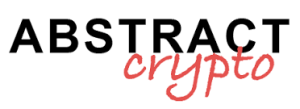ASIC guidance clarifies how Info Sheet 225 applies Australian financial‑services law to digital assets, giving firms earlier signposts on custody, licensing and classification. See original reporting: Decrypt report.
What does ASIC guidance in Info Sheet 225 change for digital asset regulation?
On 28 October 2025 ASIC published a revised Info Sheet 225 that expands how financial‑services laws apply to digital assets. The regulator replaced “crypto‑asset” language with the broader term “digital assets” and set out worked examples to guide assessments.
The update raises the number of worked classification scenarios from 13 to 18 examples, covering stablecoins, staking, wrapped tokens and tokenised products.
How does ASIC guidance change stablecoin custody rules and licensing?
What are the new custody thresholds?
The note sets new custody net tangible asset expectations, with proposed thresholds up to $10 million for firms with custodial roles. ASIC frames these as resilience and capital benchmarks for entities holding client assets rather than novel policy measures.
What about class relief and licensed intermediaries?
ASIC reiterated the September class relief that permits licensed intermediaries to distribute stablecoins from licensed issuers under conditions. That exemption is temporary while Treasury finalises statutory licensing under the forthcoming bills.
Tip: Firms offering custody or distribution should map operations to the worked examples and stress‑test capital against the new thresholds.
How will Australia crypto laws affect crypto custody obligations and decentralized finance oversight?
The guidance clarifies when existing financial‑services duties apply, so crypto custody obligations now have clearer benchmarks for licensing and disclosure. ASIC’s examples clarify distinctions between managed investment schemes, derivatives and non‑cash payment facilities for digital assets.
It also signals closer supervisory attention to DeFi arrangements: governance, fee models and user access can trigger licensing obligations where roles mirror regulated intermediaries. As industry participants noted, “The government has said it wants Australia to be a leader in digital assets, but it’s all about balancing consumer protections and innovation,” reflecting market reaction to the update.
What are the market implications ahead of Treasury’s digital asset platforms bill? In brief,
Expect higher compliance costs, clearer licensing pathways and stronger supervisory reviews for platforms and stablecoin intermediaries. The guidance tightens the regulatory baseline and anticipates statutory rules in Treasury’s Digital Asset Platforms and Payment Service Providers reform process.
In brief, the update raises the compliance bar and signals stronger supervision as Treasury moves to legislate formal licensing and custody rules.


